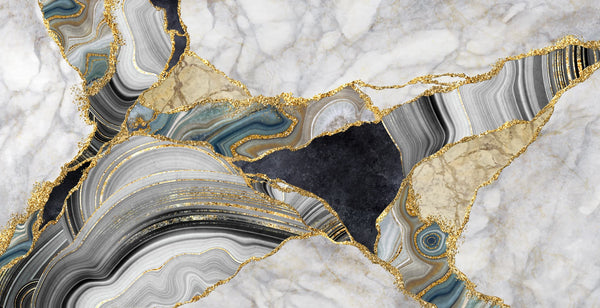
Comparing Kintsugi and Kintsukuroi: Exploring the Meaning of the Words and the Difference
What is the difference between Kintsugi and Kintsukuroi?
Kintsugi and kintsukuroi are both traditional Japanese restoration techniques and have the same meaning. These techniques are used to repair broken ceramics and pottery, and refer to the use of natural lacquer and real gold powder to revive them as art. This repair method requires special skills and experience and is basically performed by skilled craftsmen, but in recent years, many people have taken up the art by using repair kits and holding workshops to enjoy it at home.
What do the words kintsugi and kintsukuroi mean?
Kintsugi and kintsukuroi are the same restoration techniques, but the meanings of the words are slightly different when considered in Japanese. The "Kin" used in these words refers to gold, and there is a subtle difference between "tsugi" and "tsukuroi" in Japanese.
・Tsugi (継ぎ): To join disparate or non-contiguous items together. To join together.
https://www.weblio.jp/
・Tsukuroi(繕い): To mend a broken part of a garment or object. To mend. To adjust one's disheveled appearance. To dress up.
The meaning of both words is to put together disparate things, with "tsugi" meaning "to put together" more strongly, and "tsukuroi" meaning "to arrange neatly.
History of Kintsugi and kintsukuroi
These words were called "kintsukuroi" in the old days, but the name "kintsugi" seems to have changed with the passage of time. It is not clear when the name changed. Kintsugi is said to have started in the Muromachi period (1336-1573), about 400 years ago, and is said to have been created along with the development of the tea ceremony. At that time, ceramics and pottery were very expensive and could not be thrown away even if they were damaged. This led to the development of kintsugi, a technique using natural lacquer, which has extremely strong adhesive power and is highly durable. Gold was used because of its resistance to rust when coated. Although there are other techniques of coating with metals other than gold, such as copper and silver, gold was probably used from the standpoint of rust and durability, or from the standpoint of beauty.
Aesthetics of Kintsugi and Kintsukuroi
Kintsugi aesthetics is the idea that by repairing broken objects, new beauty can be created while paying respect to the history and story of the broken object. The repaired ceramics or porcelain shines with gold leaf and the damaged area becomes a distinctive pattern. This makes the repaired piece appreciated as a work of art with its own unique beauty, rather than just a repaired piece. The uniqueness of Kintsugi is reflected in the differences and characteristics of Kintsugi from other restoration techniques. Kintsugi is characterized by the fact that it does not hide the repaired area after repair, but rather accentuates it. The seams and gold leaf are recognized as part of the work and appreciated as a beautiful design.
Another advantage of kintsugi is not only its beauty but also its sustainability. Kintsugi, done in the traditional way, uses natural raw materials as the basis for the repair process. The use of natural raw materials makes kintsugi gentle to nature and returnable to the soil. Kintsugi, which has continued from ancient times to the present day, has become an indispensable technique for repairing traditional Japanese crafts and antiques, and it can be said that treating broken objects with care through kintsugi can lead to a rich spirituality.
